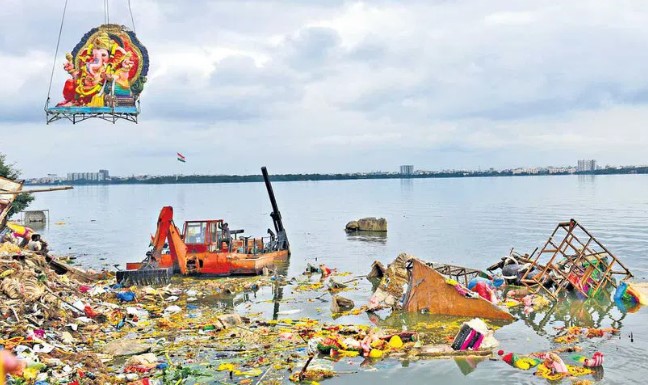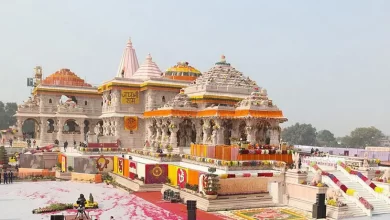Push for clay idols leaves Hussain Sagar less polluted

Pollution level in Hyderabad’s Hussain Sagar lake has not significantly increased this year due to the immersion of Ganesh idols, all thanks to the State government’s steady efforts in promoting clay idols and the heavy rainfall that the city received during those days.
This year, about 88,299 Ganesh idols were immersed in the Hussain Sagar out of which 42,952 were of clay and 45,347 of Plaster of Paris (PoP). The Telangana State Pollution Control Board (TSPCB) points out that half of the idols were of clay.
Every year, the board monitors the water quality of the lake during the Ganesh festival. This year too it scrutinised the water quality before, during, and after the immersion of idols. The samples were collected from six different locations on August 28, September 2, 5, 7, 9, and 12.
According to the joint chief environmental scientist of TSPCB, four samples were collected during immersion and one each before and after immersion. The samples were collected at platform number one and two at NTR Park, near Lumbini Park, at Necklace Road, near Lepakshi Handicrafts (near immersion point), and near Buddha Statue (midstream) control point.
Though Ganesh immersions last month did lead to a slight spike in pollution levels in the lake, these levels are said to have dropped back to normal soon after the removal of idol debris. During the immersion as well, the data showed only a minimal increase in Total Dissolved Solids (TDS), which indicates the level of harmful contaminants in water.

The level of Dissolved Oxygen (DO), which is essential for the survival of aquatic life, was low during the immersion period but increased slightly after immersion. In addition, Chemical Oxygen Demand (COD) and Biochemical Oxygen Demand (BOD), which indicate the amount of oxygen necessary to break down organic and inorganic pollution, increased during immersion at all locations and decreased after immersion, TSPCB stated in its analysis report. It further said that there was no significant change in heavy metals (Cr, Cu, Zn, and Pb) during and after immersion as well.
Meanwhile, the comparative trend analysis report shows a decreasing trend too. TSPCB says, “COD and BOD have shown a decreasing trend in the year 2022 when compared to the previous year at all locations. There is no significant change in DO and TDS at all locations in 2022 compared to 2021. No significant change in heavy metal was observed in the year 2022 over the previous year.”
The board attributed the decreasing trend to the increase in the use of clay idols and the dilution of water bodies that may have occurred due to the rainfall during the festival. To protect Hussain Sagar and other lakes in the city from further pollution, the State government came up with a slew of initiatives that reaped benefits. Different line departments distributed more than six lakh clay Ganesh idols in the city and several artificial ponds were constructed.







